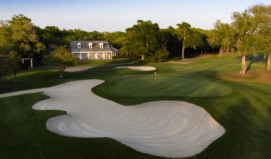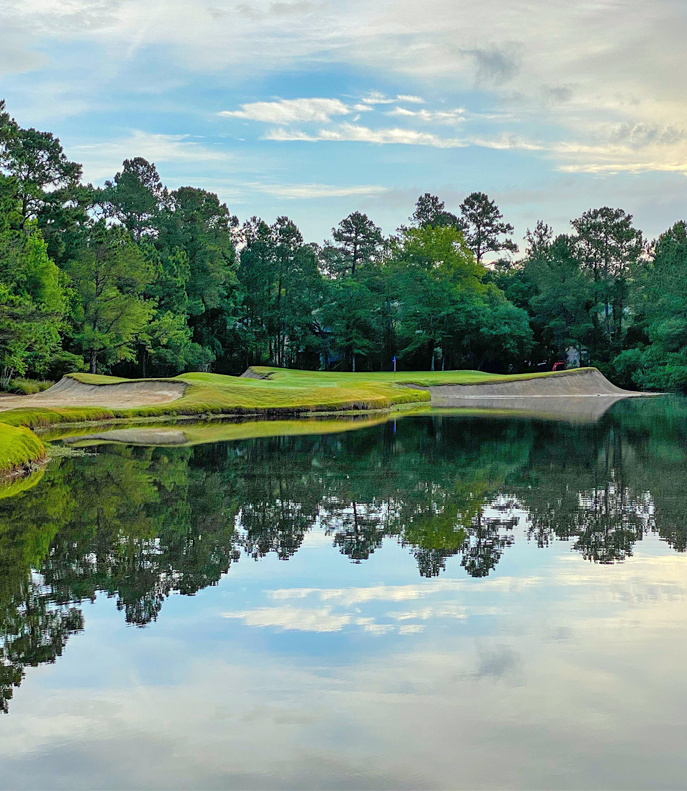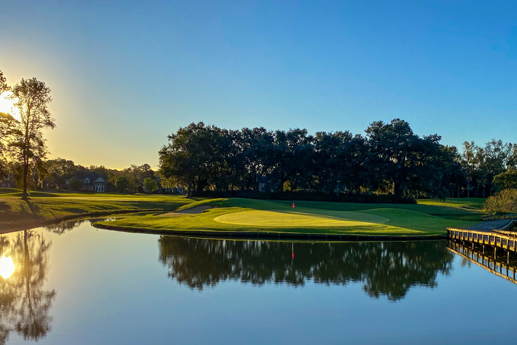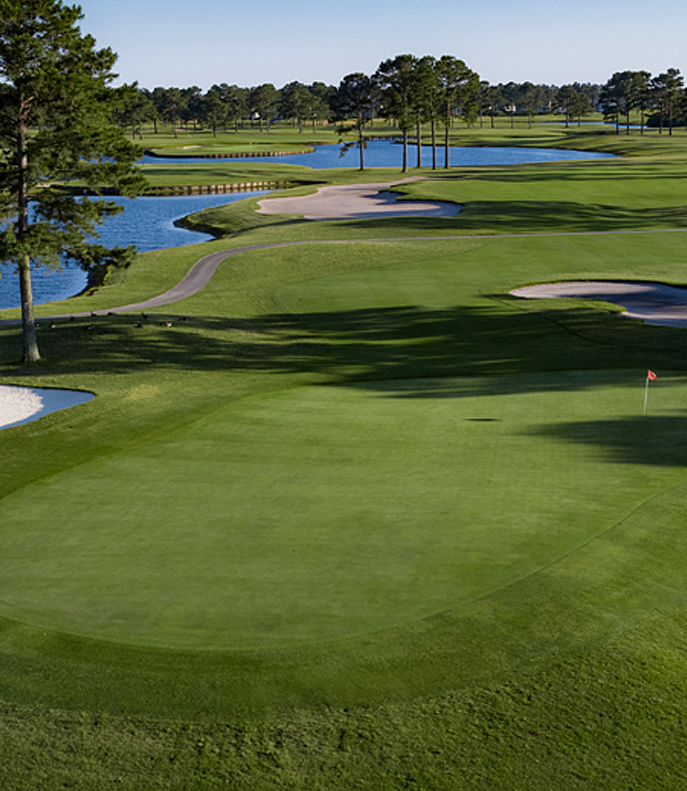Beyond its status as a decorated golf course along the Myrtle Beach area’s South Strand, Dan Maples’ Willbrook Plantation also provides its visitors with a compelling history lesson. Course markers tell an important part of the story of life in 18th Century South Carolina for those who lived and worked on these grounds.
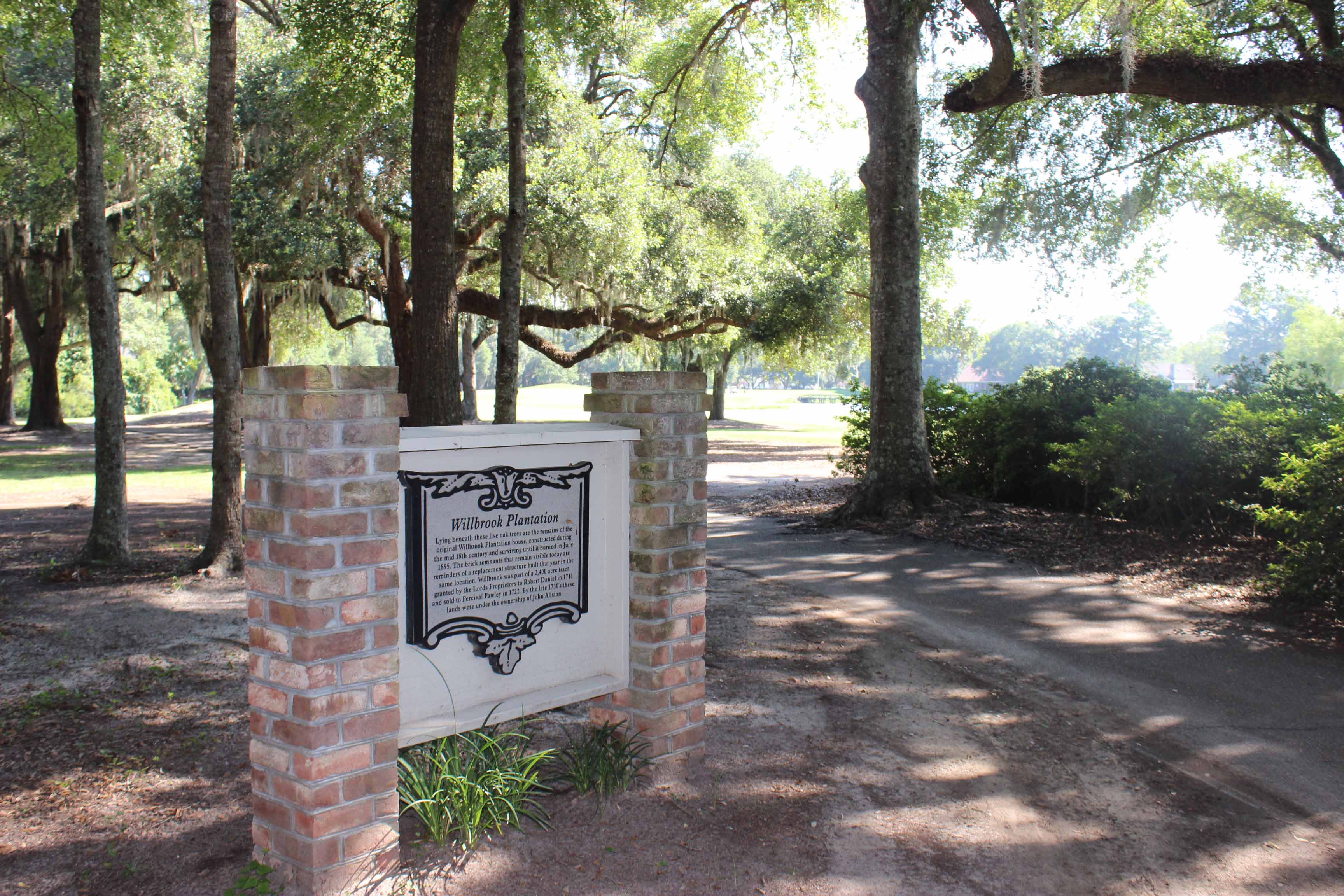
Archaeological Dig (leaving 9th green)
In 1985, archaeologist Larry Lepionka conducted an excavation project which uncovered artifacts at this location. These artifacts date back to the eighteenth century and include lad glazed slipper, white salt glazed stoneware and a brass grommet. The large metal artifacts recovered suggest this site represented an industrial site and possibly a rice mill. It has been recommended as eligible for the National Register of Historic Places.
Irrigation Dike (heading toward 1st tee)
Dating back to the Eighteenth Century. This is one of several dikes built for controlled flooding and drainage of the rice fields. With the abandonment of the rice field cultivation in the late nineteenth century, its primary purpose was the use of boat access to the Waccamaw River. (est. 1798)
Oakland Plantation Slave Cemetery (8th hole)
Lying within the soil of this sandy ridge, close to the southern edge of the plantation, are the remains of black slaves who labored on Oatland Plantation from the mid eighteenth century until 1865. The visible headstone of Albert Doctor, who departed this life in 1919, represents the desire of those born into slavery but who died free, to lie beside their ancestors.
Willbrook Plantation (5th hole)
Lying beneath these live oak trees are the remains of the original Willbrook Plantation house, constructed during the mid-18th century and surviving until it burned in June 1895. The brick remnants that remain visible today are reminders of a replacement structure built that year in the same location. Willbrook was part of a 2,400-acre tract granted by the Lords Proprietors to Robert Daniel in 1711 and sold to Percival Pawley in 1722. By the late 1730’s these lands were under the ownership of John Allston.
Willbrook Slave Settlement (4th hole)
At a location approximately 500 feet to the West, lying on a broad sand ridge, were four rows of slave cabins totaling 18 in number. At the height of rice production in 1850, these cabins housed 140 slaves who toiled daily in the Willbrook rice fields and cultivated upland crops. These were small houses, perhaps no larger than 14 feet by 16 feet, made of clapboard siding with brick chimneys.
Nature buffs will also enjoy this marker near the first tee:
AviIfauna: Birds of the Carolinas (located near 1st hole)
Osprey – “Fish hawks” nest in tall dead trees. Feed almost entirely on fish. Return to same nest each year.
Carolina Chickadee – Love sunflower seeds. Nest in old woodpecker holes. Feed on insects.
Great Horned Owl – “Hoot owl” known for 4 to 7 hoots. Live in nests made by crows or hawks. Feed on poultry & bird.

